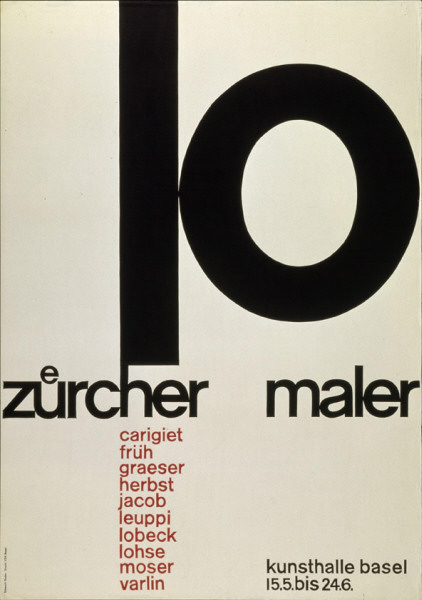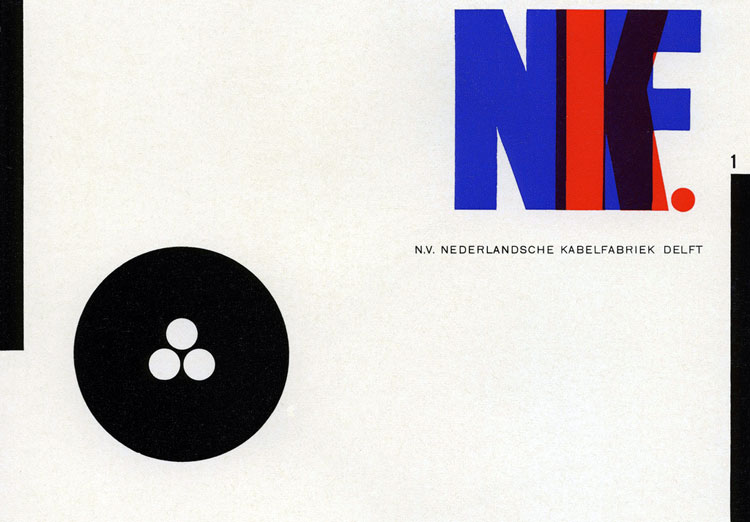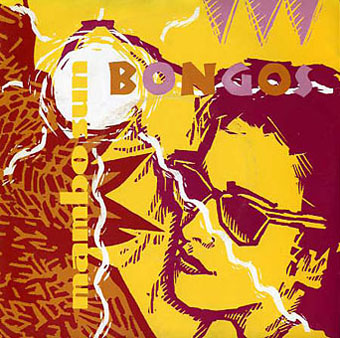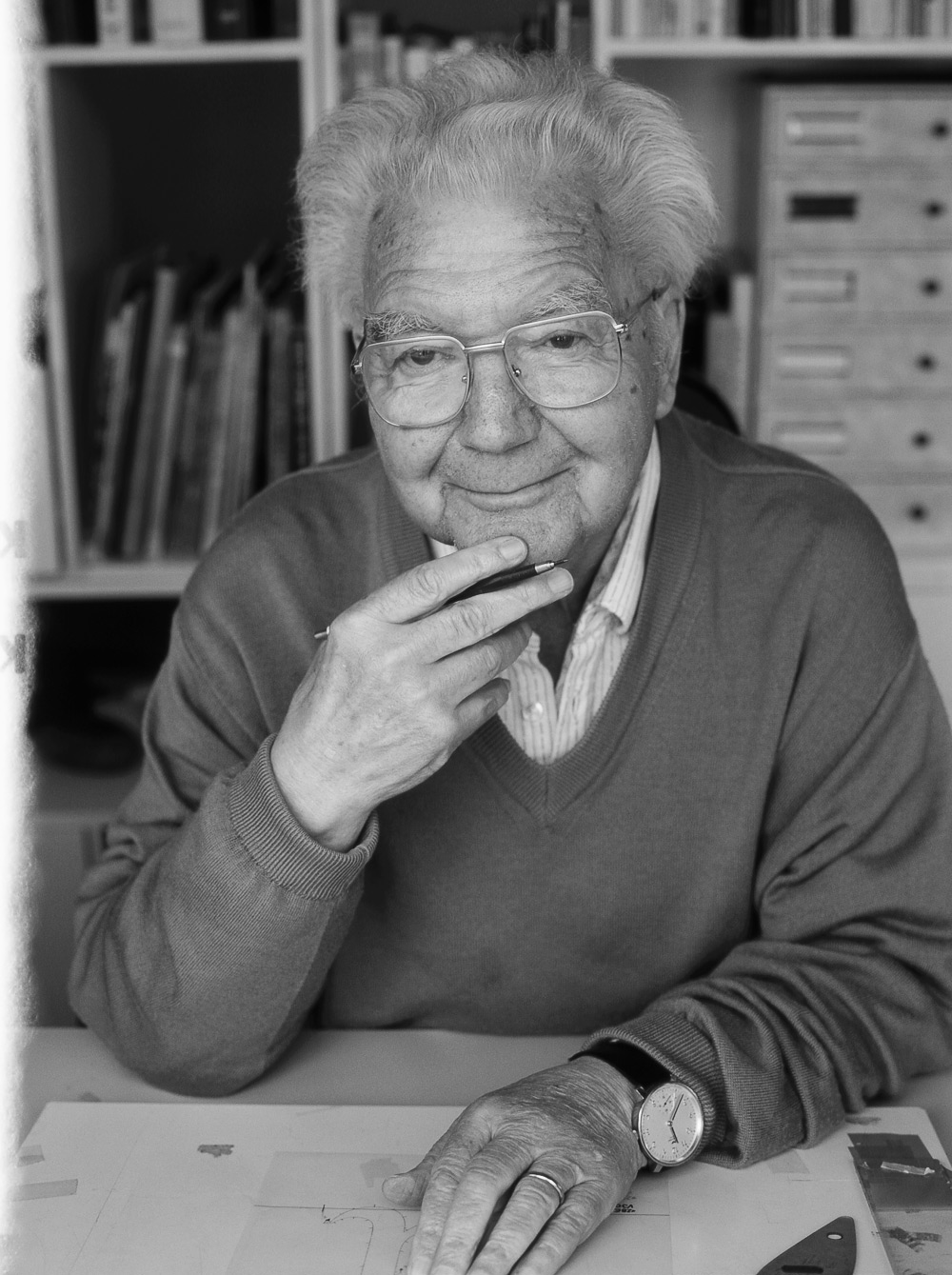This is a collection of infographics that I believe to be successful images of how infographics should function. Presenting ideas and statistics in a reasonable and understandable way, yet with aesthetic attractiveness as well.
Monday, September 29, 2014
Wednesday, September 10, 2014
Dead guys
Paul Rand
Paul Rand, born Peretz Rosenbaum, lived from 1914 to 1996. Just a month ago, there were people celebrating his would-have-been 100th birthday. Rand was an American designer, and was one of the founders of the Swiss Style of graphic design. He studied at the Pratt Institute, the Parsons School of Design, and the Arts Student League between the years of 1929 and 1934. His family did not support his decision to pursue art as a career and, as a result, much of Rand's learning he taught himself by studying magazines of European art and design. He changed his name to Paul Rand at a young age to distance himself from his Jewish community, which was somewhat condescending of his work. Beginning in his college days, his reputation as a designer grew throughout the rest of his life. He was well known for his work of the 1950's and 60's doing corporate logos for companies such as IBM, ABS, Ford, and UPS, which are still in use today (except for UPS, which caused a huge controversy when they decided to change their branding after Rand's death).
Paul Rand, born Peretz Rosenbaum, lived from 1914 to 1996. Just a month ago, there were people celebrating his would-have-been 100th birthday. Rand was an American designer, and was one of the founders of the Swiss Style of graphic design. He studied at the Pratt Institute, the Parsons School of Design, and the Arts Student League between the years of 1929 and 1934. His family did not support his decision to pursue art as a career and, as a result, much of Rand's learning he taught himself by studying magazines of European art and design. He changed his name to Paul Rand at a young age to distance himself from his Jewish community, which was somewhat condescending of his work. Beginning in his college days, his reputation as a designer grew throughout the rest of his life. He was well known for his work of the 1950's and 60's doing corporate logos for companies such as IBM, ABS, Ford, and UPS, which are still in use today (except for UPS, which caused a huge controversy when they decided to change their branding after Rand's death).
Sources:
Max Huber
Max Huber was a Swiss born graphic designer. He was born in 1919. At the age of 17, he entered the Zurich School of Arts and Crafts. He was full of ideas and, along with a few friends, helped launch what is now referred to as the International Typographic Style. This system relies heavily on a grid system, use of right and left margins, sans serif fonts, and clear, structured layouts. At 21, Huber moved to Milan, which gave him the opportunity to experiment with merging together illustration, printing, photography, and painting. He went on to do a great deal of freelance design and enjoyed working in tandem with his clients.
Sources:
Emil Ruder
Emil Ruder was born in Switzerland in 1914. He worked alongside Armin Hofmann in developing what is known as Swiss Design. Ruder began his design career at age 15 with a design apprenticeship. He went on to study at the Zurich School of Arts and Crafts. In 1947, he became a typography instructor at the Basel School of Design. In his work with Hofmann, they together began to steer away from the former stylized designs and focus more on precision, cleanness, and legibility. Ruder ad a love for sans serif fonts, and clear and concise typography in his work. He also embraced asymmetry, paying close attention to weight and white space. The Univers font family, developed by his friend, Adrian Frutiger, inspired him and he and his students did numerous experiments with mixing the various font weights.
Sources:
El Lissitzky
Shying away from the Swiss born designers, we have El Lissitzky from Vitebsk, Russia. Lissitzky, born Eleazar Markovich Lisitskii in 1890, was an artist, typographer, designer, photographer, and architect who did a considerable amount of work for Soviet Russia in early 1900's. He studies architecture in Darmstadt from 1909 to 1914. In 1921, he became a professor at the Moscow Art Academy. In addition, between 1921 and 1925, he worked as Russian propagandist in Germany, the Netherlands, and Switzerland. Much of his work involved propaganda for the Soviet Union including posters, books, buildings, and exhibitions. In his work, he contributed a lot of ideas that gave aid to the Suprematist, Bauhaus, and Constructivist art movements. Lissitzky did a lot of work with abstract art, using various shapes, which he called proun, to balance the space in his works.
Sources:
Piet Zwart
Piet Zwart was born in the Netherlands in 1885. From 1902 to 1907, he studied at the School of Applied Arts in Amsterdam. Teachers were not always present or active in the classroom, so much of his education at the School was self-imposed. After graduating, Zwart applied his education to furniture, interior and fabric design, but after World War I, decided to pursue a different route. In 1919, he began his graphic design career as a draftsman for a well-known architect of the time. Though formally trained as an architect, Zwart is now best known for his work as a designer. He was heavily influenced by the De Stijl style of art, but began to move away from its strictly abstract form. In the early 1920's, he began to experiment with typography. He would go on to refer to himself as a typotekt, a mixture of the words typographer and architect, saying that he built pages with type.
Sources:
Monday, September 8, 2014
Some Cool Designers and Creative Peeps of Today
Neville Brody
Neville Brody is one of the leading graphic designers of today. Brody was born in London, England in 1957 and studied design at the London College of Printing between the years of 1976 and 1979. Because Brody enjoyed experimenting with non-traditional methods and designs, his work at the college was met with much criticism. However, in leaving college, he stepped into the freelance designer and did a lot of work for the music industry, designing record sleeves. He became the designer for The Face magazine in 1981 where his experimentation gained global praise. In 1994, Brody was integral in developing the company, Research Studios, which is currently undergoing a name change to Brody Associates. Since its founding, Research Studios has done international work in Paris, Berlin, Tokyo, Barcelona, and New York! Brody continues to work extensively in typeface integration into design and the aid and usefulness of technology in the field of design and typography.
Sources:
http://www.fontshop.com/fonts/designer/neville_brody/
http://www.rca.ac.uk/more/staff/professor-neville-brody/
http://www.eyemagazine.com/feature/article/reputations-neville-brody
Wolfgang Weingart
Wolfgang Weingart is known for breaking from the mould of the accepted standards of typography and pioneering new ideas, contributing what is known today as 'Swiss Punk' or 'New Wave'. Born in 1941 in Germany, and studied applied art and design at the Merz Academy in Stuttgart. It was after graduating, during his apprenticeship at Ruwe Printing in Stuttgart that he met designer Karl-August Hanke who was instrumental in introducing him to design outside of Germany - particularly that of Switzerland. These styles and methods began to influence his work as he continued his apprenticeship. This especially included the use of grids and other methods of logical placement of information on the page. However, Weingart began to expand upon the Swiss ideas and developed his own style. Whereas the Swiss were concerned with logic and meaning, Weingart began to take those logical forms and introduce more creativity and variance. Sort of a "know the rules and when to break them" type approach. Weingart transformed typographic and design world with his ideas which quickly became international. In 2000, he published a book entitled My Way to Typography, which - in and of itself - is a design masterpiece.
Sources:
http://www.aiga.org/medalist-wolfgang-weingart/
http://keithtam.net/writings/ww/ww.html
Armin Hofmann
Armin Hofmann is known to be one of the most significant teachers in the graphic design field. Additionally, he is one of a number of great Swiss designers of the 1900's, aiding in revolutionizing the design world. Hofmann was born in Winterthur, Switzerland in 1920. He completed his studies at the School of Arts and Crafts in Zurich and went on to work as a lithographer's apprentice and open his own studio in Basel. In 1947, at the age of 27, he returned to the School of Arts and Crafts as a teacher and remained there for 40 years. Hofmann's legacy as a teacher is unprecedented. Students in his classes were impressed by his charisma, energy, and extreme patience. He absolutely loved the design process and wanted students to fully flesh out their ideas and designs, regardless of the amount of time it took. He was a constant encouragement in the classroom, allowing students the freedom to do their own work and generate their own ideas while he directed and guided them. Students who spent time with him outside of class recall that he loved to have fun and crack jokes. In terms of his typographic and design style, he was known for purity and simplicity. There is a certain timelessness to his work, not tied down to the fads of the day. He wrote a book, Graphic Design Manual, which continues to influence and inspire designers today.
Sources:
http://www.aiga.org/medalist-arminhofmann/
http://www.designishistory.com/1940/armin-hofmann/
Erik Spiekermann
Erik Spikermann is an information architect, type designer, and author numerous books and articles on the subject of type and typography. He was born in 1947 and studied History of Art and English in Berlin. At the age of 32, he founded MetaDesign, Germany's largest design firm, which now has offices in Berlin, London, and San Francisco. Big name clients have included Audi, Skoda, Volkswagen, Lexus, Heidelberg Printing, as well as many German companies and organizations. He is also the founder of the well known site, FontShop, a font production and distribution center. He continues to work extensively in the field of typography. In the past 10 years, he has received many honors and awards for his vast contributions to the work and study of typography. He is currently a professor at the University of Arts in Bremen.
Sources:
http://spiekermann.com/wp-content/uploads/2008/10/bio_en_1208.pdf
Jessica Hische
Born in South Carolina in 1984, Jessica Hische grew up in Pennsylvania. Her parents were not artistic, but were encouraging of her ambitions. In college, she was a star student and absolutely poured herself into her work. She graduated from Tyler School of Art in 2006 with a degree in Graphic and Interactive Design. Fresh out of college, she was hired by Headcase Design in Philly as a freelance designer where she helped design books and grew in her love for illustration and image-making. When the Headcase cut her hours, she developed a promo for herself and was hired by Louise Fili's studio in Brooklyn, where she stayed for two and a half years. Since leaving Louise Fili's, she started her own company and continues to be quite successful as a freelance artist. One of her most recognizable works is the logo and branding redesign for MailChimp.
Sources:
http://jessicahische.is/anoversharer
and... the dreaded Wikipedia https://en.wikipedia.org/wiki/Jessica_Hische
Neville Brody is one of the leading graphic designers of today. Brody was born in London, England in 1957 and studied design at the London College of Printing between the years of 1976 and 1979. Because Brody enjoyed experimenting with non-traditional methods and designs, his work at the college was met with much criticism. However, in leaving college, he stepped into the freelance designer and did a lot of work for the music industry, designing record sleeves. He became the designer for The Face magazine in 1981 where his experimentation gained global praise. In 1994, Brody was integral in developing the company, Research Studios, which is currently undergoing a name change to Brody Associates. Since its founding, Research Studios has done international work in Paris, Berlin, Tokyo, Barcelona, and New York! Brody continues to work extensively in typeface integration into design and the aid and usefulness of technology in the field of design and typography.
Sources:
http://www.fontshop.com/fonts/designer/neville_brody/
http://www.rca.ac.uk/more/staff/professor-neville-brody/
http://www.eyemagazine.com/feature/article/reputations-neville-brody
Wolfgang Weingart
Wolfgang Weingart is known for breaking from the mould of the accepted standards of typography and pioneering new ideas, contributing what is known today as 'Swiss Punk' or 'New Wave'. Born in 1941 in Germany, and studied applied art and design at the Merz Academy in Stuttgart. It was after graduating, during his apprenticeship at Ruwe Printing in Stuttgart that he met designer Karl-August Hanke who was instrumental in introducing him to design outside of Germany - particularly that of Switzerland. These styles and methods began to influence his work as he continued his apprenticeship. This especially included the use of grids and other methods of logical placement of information on the page. However, Weingart began to expand upon the Swiss ideas and developed his own style. Whereas the Swiss were concerned with logic and meaning, Weingart began to take those logical forms and introduce more creativity and variance. Sort of a "know the rules and when to break them" type approach. Weingart transformed typographic and design world with his ideas which quickly became international. In 2000, he published a book entitled My Way to Typography, which - in and of itself - is a design masterpiece.
Sources:
http://www.aiga.org/medalist-wolfgang-weingart/
http://keithtam.net/writings/ww/ww.html
Armin Hofmann
Armin Hofmann is known to be one of the most significant teachers in the graphic design field. Additionally, he is one of a number of great Swiss designers of the 1900's, aiding in revolutionizing the design world. Hofmann was born in Winterthur, Switzerland in 1920. He completed his studies at the School of Arts and Crafts in Zurich and went on to work as a lithographer's apprentice and open his own studio in Basel. In 1947, at the age of 27, he returned to the School of Arts and Crafts as a teacher and remained there for 40 years. Hofmann's legacy as a teacher is unprecedented. Students in his classes were impressed by his charisma, energy, and extreme patience. He absolutely loved the design process and wanted students to fully flesh out their ideas and designs, regardless of the amount of time it took. He was a constant encouragement in the classroom, allowing students the freedom to do their own work and generate their own ideas while he directed and guided them. Students who spent time with him outside of class recall that he loved to have fun and crack jokes. In terms of his typographic and design style, he was known for purity and simplicity. There is a certain timelessness to his work, not tied down to the fads of the day. He wrote a book, Graphic Design Manual, which continues to influence and inspire designers today.
Sources:
http://www.aiga.org/medalist-arminhofmann/
http://www.designishistory.com/1940/armin-hofmann/
Erik Spiekermann
Erik Spikermann is an information architect, type designer, and author numerous books and articles on the subject of type and typography. He was born in 1947 and studied History of Art and English in Berlin. At the age of 32, he founded MetaDesign, Germany's largest design firm, which now has offices in Berlin, London, and San Francisco. Big name clients have included Audi, Skoda, Volkswagen, Lexus, Heidelberg Printing, as well as many German companies and organizations. He is also the founder of the well known site, FontShop, a font production and distribution center. He continues to work extensively in the field of typography. In the past 10 years, he has received many honors and awards for his vast contributions to the work and study of typography. He is currently a professor at the University of Arts in Bremen.
Sources:
http://spiekermann.com/wp-content/uploads/2008/10/bio_en_1208.pdf
Jessica Hische
Born in South Carolina in 1984, Jessica Hische grew up in Pennsylvania. Her parents were not artistic, but were encouraging of her ambitions. In college, she was a star student and absolutely poured herself into her work. She graduated from Tyler School of Art in 2006 with a degree in Graphic and Interactive Design. Fresh out of college, she was hired by Headcase Design in Philly as a freelance designer where she helped design books and grew in her love for illustration and image-making. When the Headcase cut her hours, she developed a promo for herself and was hired by Louise Fili's studio in Brooklyn, where she stayed for two and a half years. Since leaving Louise Fili's, she started her own company and continues to be quite successful as a freelance artist. One of her most recognizable works is the logo and branding redesign for MailChimp.
Sources:
http://jessicahische.is/anoversharer
and... the dreaded Wikipedia https://en.wikipedia.org/wiki/Jessica_Hische
Friday, September 5, 2014
[ynivɛr]
Univers is one of the most popular font faces of today, developed by the acclaimed designer and typographer, Adrian Frutiger (discussed in my previous post). A sans serif font, Univers lacks any extra "fluff", making it one of the most versatile font faces. However, this same characteristic lack of superfluity also gives it a certain recognizable distinctiveness and readability. Because Frutiger ensured uniformity throughout the font family, any of the fonts can be used ensemble without creating an eyesore.
Frutiger developed and employed a method of organizing the fontface, which was labeled the Univers Grid. This grid was a way of sorting the font by size and weight. An example of the Univers Grid is seen below. Since Frutiger developed the font in the 1950's, it has grown to encompass over 40 variations.
Frutiger developed and employed a method of organizing the fontface, which was labeled the Univers Grid. This grid was a way of sorting the font by size and weight. An example of the Univers Grid is seen below. Since Frutiger developed the font in the 1950's, it has grown to encompass over 40 variations.
The Univers Grid
Sources:
Adrian Frutiger
If you've ever wondered who Adrian Frutiger is, now is your chance to find out! Adrian Frutiger is a Swiss typographer, best known for his development of the Univers font family. Born in 1928 in Switzerland, Frutiger was interested in sculpture, but was strongly encouraged by his father and teachers to pursue a career in printing instead. He complied, but never lost his love for sculpture. At 16, he began working as a printer's apprentice in his hometown. He then moved to Zurich to study from 1949 - 1951 and, in 1952, he was hired as an artistic director by Deberny & Peignot, a well-known type foundry of the time, located in Paris. Between the years of 1954 - 1957, he worked to develop the Univers font family, which gained him international acclaim. He developed numerous type faces for the world and also developed custom font faces for businesses and corporations, including the Charles de Gaulle Airport, BP, and Shiseido.
In 1960, he left to start a design studio alongside two partners. From this platform, he worked with branding, signage, maps, and more. He was a teacher at l'Ecole Estienne in Paris for ten years and at l'Ecole Nationale Supérieure des Arts Décoratifs in Paris for eight years. As a designer and typographer, he has received a number of formal honors, recognizing his significant work in the field. He has also written a number of books about typography and design.
One characteristic that aided Frutiger's success was his willingness - and eagerness - to embrace new technologies as they were developed. This allowed him to keep up with the times and develop his typefaces and designs in accordance with modern standards.
Sources:
http://typophile.com/node/12118
http://www.identifont.com/show?110
http://www.eyemagazine.com/feature/article/reputations-adrian-frutiger
Adrian Frutiger
In 1960, he left to start a design studio alongside two partners. From this platform, he worked with branding, signage, maps, and more. He was a teacher at l'Ecole Estienne in Paris for ten years and at l'Ecole Nationale Supérieure des Arts Décoratifs in Paris for eight years. As a designer and typographer, he has received a number of formal honors, recognizing his significant work in the field. He has also written a number of books about typography and design.
One characteristic that aided Frutiger's success was his willingness - and eagerness - to embrace new technologies as they were developed. This allowed him to keep up with the times and develop his typefaces and designs in accordance with modern standards.
Sources:
http://typophile.com/node/12118
http://www.identifont.com/show?110
http://www.eyemagazine.com/feature/article/reputations-adrian-frutiger
Subscribe to:
Comments (Atom)































